
78.
|
In
the prevailing construction many walls were built with brick or
concrete block. The standard practice had been to build the
wall with brick or block and then cover it with stucco. The
result was that the brick and concrete block buildings looked the
same as the prefab concrete buildings. I suggested, that
since we were using brick and block, we might use them exposed to
take advantage of their special character and
texture and give variety to our buildings. The
architects replied that the brick was of low quality.
When I told them that in the U.S. people paid extra for old used
brick, they burst into uncontrollable laughter.
Nevertheless, we explored the possibilities.
|
| |
Integrating
Design & Construction. |
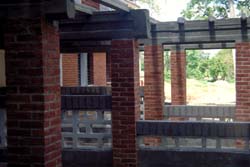
79. |
We
wanted the active participation of the construction workers in
the creative process. We wanted architects, builders, engineers
and planners working together in an integrated, interactive
process.
Early on, in a meeting with the architects and builders, we were
discussing the use of brick and concrete
block. I asked everyone to think of the best
or most interesting example of the use of brick or block they
knew of. We then organized a trip to go to each of these
places and at each spot ask the question, "What can we
learn from this example? What can we use?" It
was significant that this meeting and trip included both
construction workers and design professionals. This was
not usual. More conventionally it would be taken that the
designers were the authority. They would give instructions
and the workers would carry them out. This impacted that
social standard and to some degree everybody initially felt
uncomfortable. However, as soon as we started looking at
examples, everybody's thoughts started racing and soon we were
brainstorming together. The result was that many creative
ideas came from the construction workers and many of the
construction details were worked out by them. Another
result was more creative ideas from the designers and more
respect and interest from the workers in carrying them out.
|
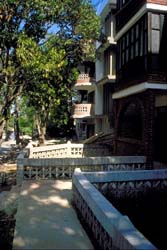
80. |
Sometimes
the process became very spontaneous. The little pyramids on
this wall just appeared one day. Some of the construction
workers came up with the idea and did it. The architect liked
it so they stayed. |
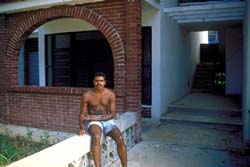
81. |
Bricks
were typically delivered to the site in dump trucks which would
dump them quickly helter-skelter into a large pile. One of
the women architects noticed that as a result a large number of
the bricks were broken. She had suggested that more care be
taken unloading the bricks but her suggestion went unheeded.
When next truck came with bricks, she and another young woman
architect unloaded the bricks themselves breaking almost
none. Thereafter, without further comment, bricks were
unloaded carefully by all the workers. |
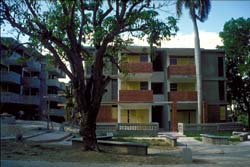
82. |
It
is significant that the construction workers in the microbrigades
were not professional builders. They had to learn as they
went. However, our team had a wonderful dedication and
enthusiasm. The participation and interaction of all members
in design and construction, as well as the fact that the people
building would ultimately live there, must have had an
impact. You could see the learning process in the buildings
where the upper floors were better built than the first floor. |
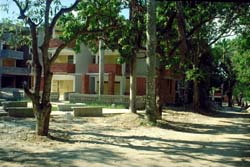
83. |
The quality of construction that we obtained was quite high.
I remember commenting to one of the Cuban building officials that
the quality of construction was quite good. He said, "It
is the best in Havana."
|
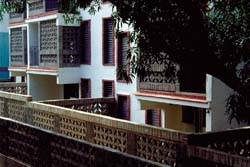
84.
|
The
architects and builders were creative in their detailing of the
buildings. |
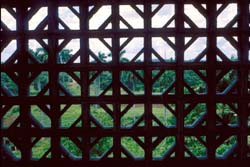
85. |
Using
simple materials in varied ways with careful craftsmanship. |
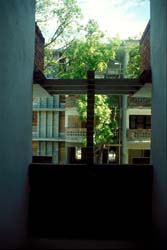
86. |
Looking
from open stairway to "private common space" between
buildings. |
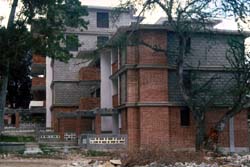
87. |
We
insisted that the architects participate in the construction.
I remember one of the young women architects puzzling over a brick
window detail she was working on. She asked me about it.
I said, "Build it." I felt some trepidation asking
this delicate young woman to pickup brick and mortar However,
that was my problem, not hers and she went out on the site and built
several alternatives to her detail. What she came up with
in her experiment was excellent and after that her designs took
a leap forward. |

